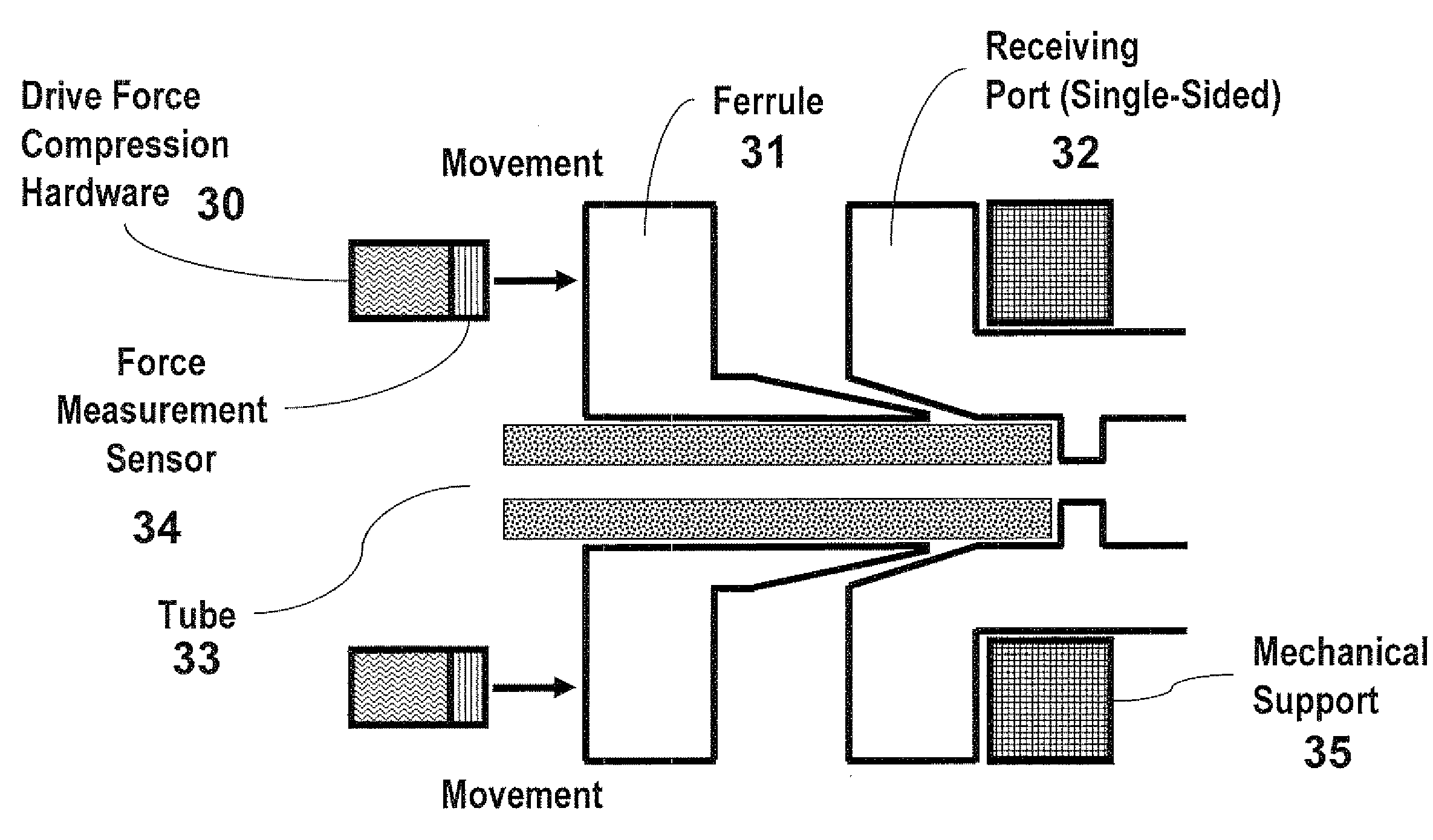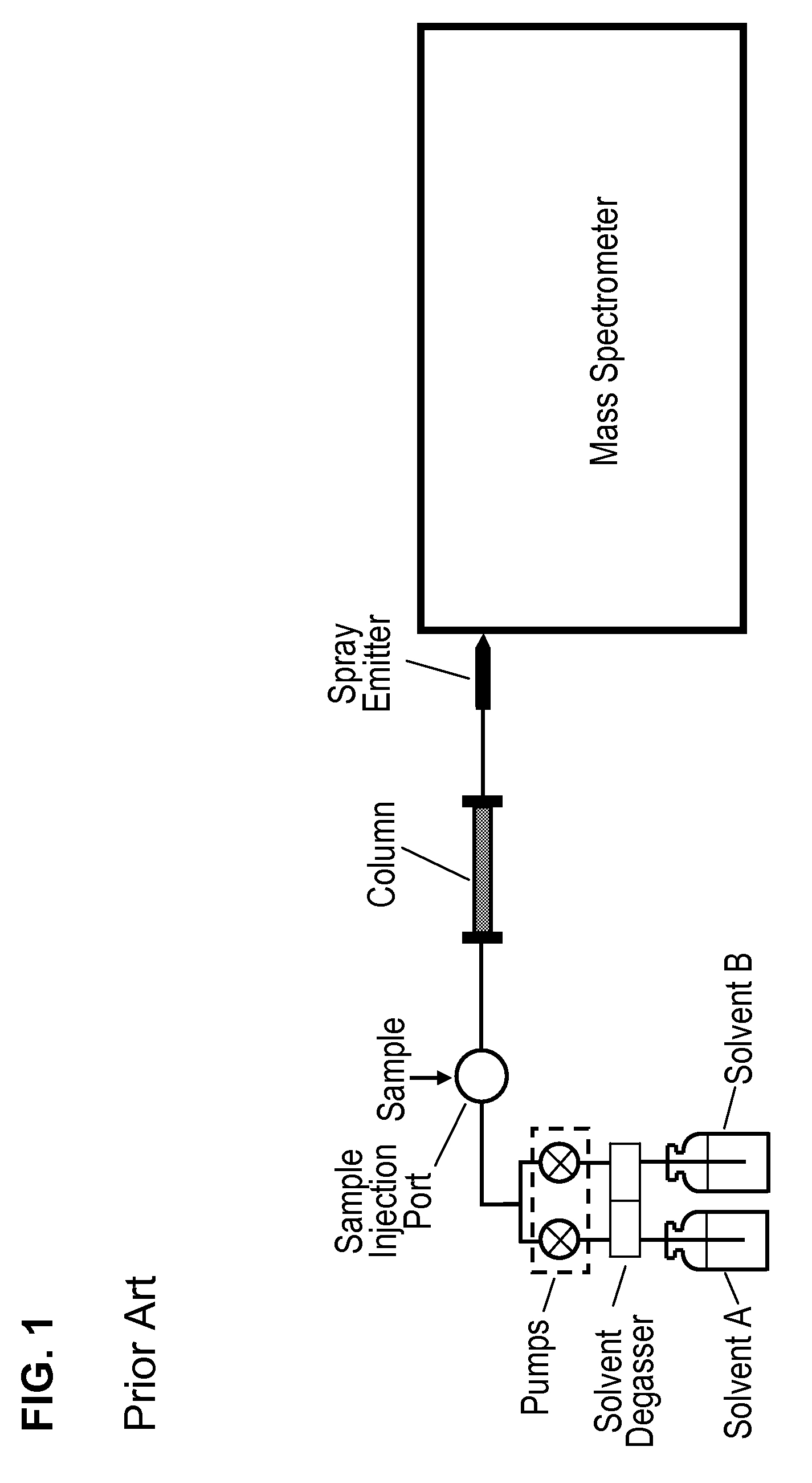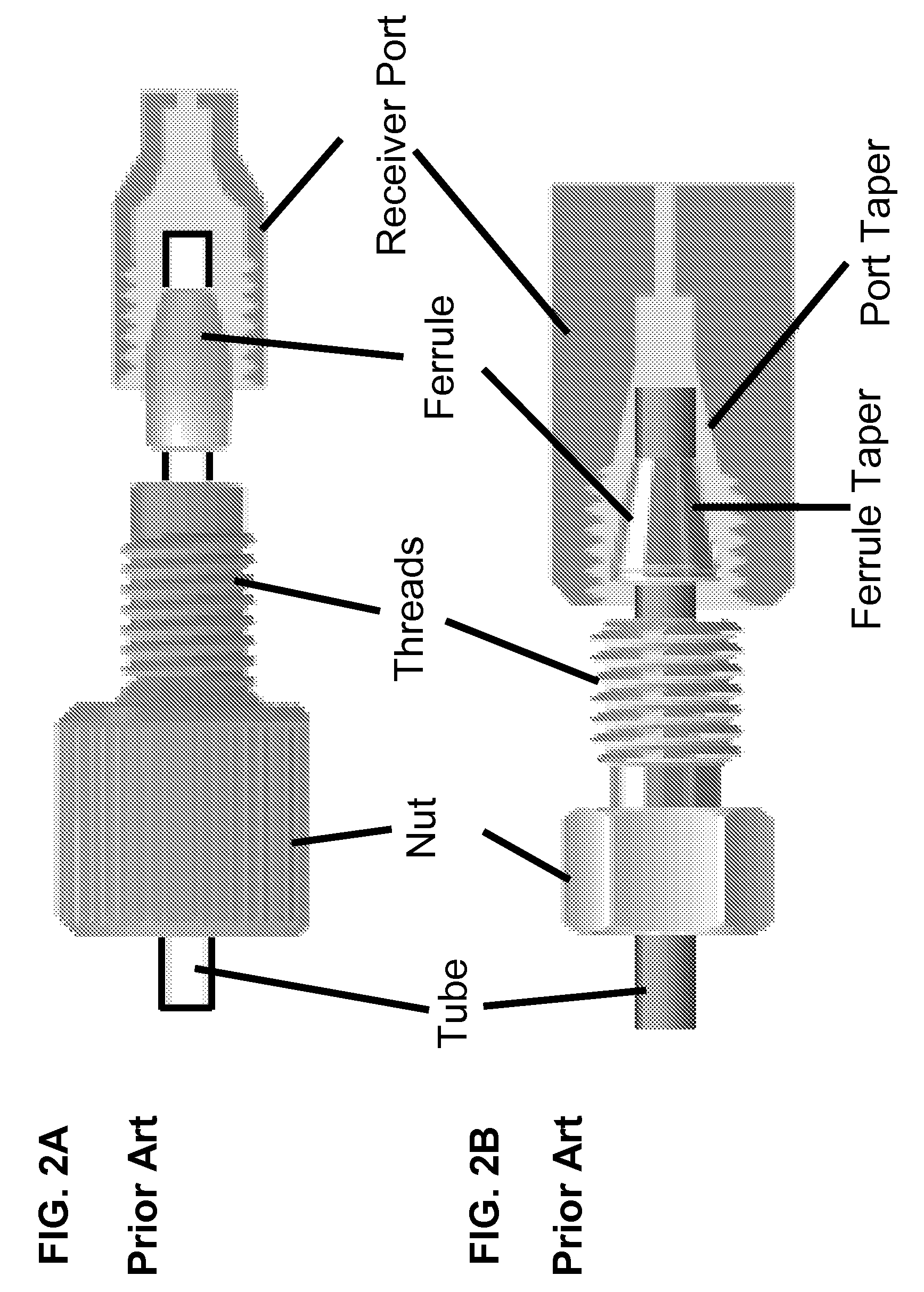Compression connection
a fluidic system and compression connection technology, applied in the field of fluidic system, can solve the problems of difficult to perform the nanolc, damage to the tube, the fitting, or the fragile capillaries, and achieve the effect of reducing the complexity of fluidic system, and increasing sensitivity and efficiency
- Summary
- Abstract
- Description
- Claims
- Application Information
AI Technical Summary
Benefits of technology
Problems solved by technology
Method used
Image
Examples
example
[0148]A nanoLC column is constructed and coupled to a nanoelectrospray emitter (the emitter can be the same substrate or a separate substrate and coupled). A “plug and play” fitting is placed on the column's inlet and a second fitting is placed on the column's exit if the column and emitter are to be separate substrates. Conductive sensors with leads are place at the column inlet and between the column's exit and nanoelectrospray emitter connection. All critical alignments are made and the device is casted in a curable or hardening agent (such as a polymer) except for the column inlet and a partial zone at the spray emitter's end. The casting / mold creates an insert in a shape that fits into an accepting device in an accurate and precise orientation. A protective, retractable sheath is incorporated and positioned over the spray emitter end, eliminating the potential for damage by human intervention. The device is now protected and components are fixed in place. The compiled liquid ch...
PUM
 Login to View More
Login to View More Abstract
Description
Claims
Application Information
 Login to View More
Login to View More - R&D
- Intellectual Property
- Life Sciences
- Materials
- Tech Scout
- Unparalleled Data Quality
- Higher Quality Content
- 60% Fewer Hallucinations
Browse by: Latest US Patents, China's latest patents, Technical Efficacy Thesaurus, Application Domain, Technology Topic, Popular Technical Reports.
© 2025 PatSnap. All rights reserved.Legal|Privacy policy|Modern Slavery Act Transparency Statement|Sitemap|About US| Contact US: help@patsnap.com



